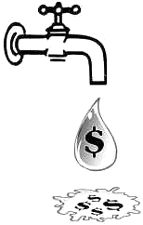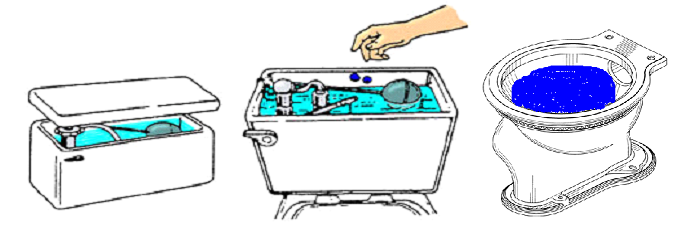What are some common reasons for frozen pipes?
Water pipes will usually be more susceptible to freezing when the outdoor air temperature is below the “teens” and “twenties” for more than several weeks. Special attention should be given when the outdoor temperature does not rise above zero degrees during the daytime hours. Some reasons for frozen pipes include:
■ Unheated basement where the water meter and pipes are located;
■ Uninsulated pipes running against cold outside walls;
■ Open or broken windows near water meters or pipes;
■ Openings or cracks that allow cold air to affect the water meter or pipes;
■ Water meter and water pipes enclosed or boxed in against outside walls.
How will I know if my pipes are frozen?
Generally, when a pipe that feeds a certain fixture such as a shower, sink, or toilet freezes, you will not be able to get water from that fixture.
Why do frozen water pipes break?
When water freezes within a pipe, the volume of water expands. The same amount of water takes up more space as a solid than as a liquid. This causes the pipes to expand and possibly break at a weak point. You may notice this immediately, or it may not become apparent until the pipe begins to thaw, with the break occurring only when full water pressure is restored.
Does this apply to water service lines (the pipes that run from the house to the street) as well as indoor pipes?
Yes! Water service lines can freeze when the ground frost gets deep enough to encase your service line in ice. However, this generally happens only when your service line is less than five feet below the surface of the ground.
What should I do if my pipes freeze?
Your best course of action is to call a professional plumber.
Can I try thawing the pipes myself?
Yes, but you’ll need to be very careful! Here are some of the safer methods:
■ If possible, expose a boxed-in area to the heat within your home;
■ Use a heat gun or a hair dryer to thaw the pipe.
■ Rub the pipe with warm, damp rags to slowly thaw the line;
Keep the faucet open while thawing the pipe. As the frozen area begins to melt, water begins to flow. This will help melt more ice in the pipe. Apply heat until full water pressure is restored; The broken pipe will have to be soldered or replaced. You must be the judge of whether you can do this yourself, or whether you’ll need to call a plumber. If you are unable to locate the frozen pipe, or if the frozen area is not accessible, or if you cannot thaw the pipe, call a licensed plumber immediately! Whatever you do, DO NOT try to thaw a frozen pipe with a blowtorch or an open flame device. There’s a good chance that you will cause the water to boil within the pipe, resulting in an explosion when the pipe bursts. All open flames in homes present a serious fire danger, as well as a severe risk of exposure to lethal carbon monoxide.
How can I prevent my pipes from freezing in the first place?
There are many things you can do to keep your pipes from freezing in extreme weather:
■ Keeping the water meter area or pipes on “outside” walls exposed to heat from nearby rooms;
■ Allow warm air to circulate around pipes. Open bathroom and kitchen cabinet doors to allow warmer air to circulate around the plumbing.
■ You can buy products made specifically to insulate water pipes, such as “pipe sleeves,” “heat tape,” “heat cables,” or other similar products. Most of them are available at your local building supply center. Be sure to follow the manufacturer’s instructions for installing and using these products;
■ Check your home for areas where water pipes are located, especially those in unheated areas. Look in the basement, crawl spaces, attic, garage, and under kitchen and bathroom cabinets. Both hot and cold water pipes should be insulated – one can freeze just as easily as the other if water is not running through the pipe and the temperature in the pipe is cold;
■ Caulk and seal any openings in outside walls near your water pipes.
■ Remove, drain, and store any hoses used outdoors. Close the inside valves that supply outdoor faucets, and open those faucets so the water can drain out. And leave it open, so that any water remaining in the pipe can expand without causing the pipe to break;
■ If it’s absolutely necessary, keep some tap water running. Not a lot; just a trickle. Moving water doesn’t freeze as readily as stagnant water. Understand, though that this method will result in an increased water bill;
■ If no one will be home for an extended period of time during extreme weather (going to Florida for the winter?), you might consider turning your main valve off altogether and draining your system, including all water pipes and fixtures. That way, there will be no water in your pipes to freeze! Even if your pipes have never frozen before, there’s always the chance that a severe cold snap could cause an electrical blackout that disables your furnace. Winterizing your water system will ensure that your pipes don’t freeze.
For a printable version click here
 Be a Leak Seeker
If you think you may have a water leak, your water meter is your best detective.
Be a Leak Seeker
If you think you may have a water leak, your water meter is your best detective.



 1. Flow Indicator
1. Flow Indicator


